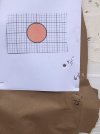stgraves - I think you misunderstood my comment.
You stated "I have a 12" steel target I shoot at with a 2 1/2 " circle in the center of it. I go back to my 700 yards and adjust my scope until I get 3 shots in the circle. I then plug those MOAs that were used on my scope into my range finder and it gives me my velocity".
That seems to imply that the calculated velocity from the Range Finder is somehow more valid than the measured velocity from the chronograph.
What raises questions in my mind is by inputting MOAs of "up" for 1 distance or a set of distances into a program (in this case a range finder) and asking the program to give back a velocity one would have had to input a BC and that inputted BC would have come from the bullet mfg and therefore there is an assumption that it is correct just like (by default) the process you described assumes that each click is exactly what the mfg says it is.
The mehtod you describe derives velocity which would imply published BCs and published MOAs per click are somehow more trusted than measured velocity and I am trying to understand why because I have shot the same load over 3 different chronographs and got very consistent readings.
My approach (similar to yours) is to take all three variable as a baseline and then confirm actual POI at series of ranges and clicks used to hit the target and record those. I simply do not worry whether there is a difference in actual POI versus expected POI given the initial calculated clicks, unless the difference is significant. I think the only thing we can be sure of is this rifle shoots X bullet with Y powder charge and when zeroed at distant Z requires A, B, C, D, E, & F # of clicks at set of corresponding distances thru actual testing. We can then go back and check some of the mid points between the distances previously specified and further analyze if actual POI matched expected POI given the calculated clicks.
I think trying to "solve for or derive anyone of the 3 variables" isn't helpful because the likelihood is there will always be some range where any derived or assumed conformance to published specification fails us and the risk of wounding an animal is just too great. In my opinion, the more likey culprits are published BC vs. actual BC and click adjustment not being exactly 1/4 moa as opposed to chrono measurement errors.


